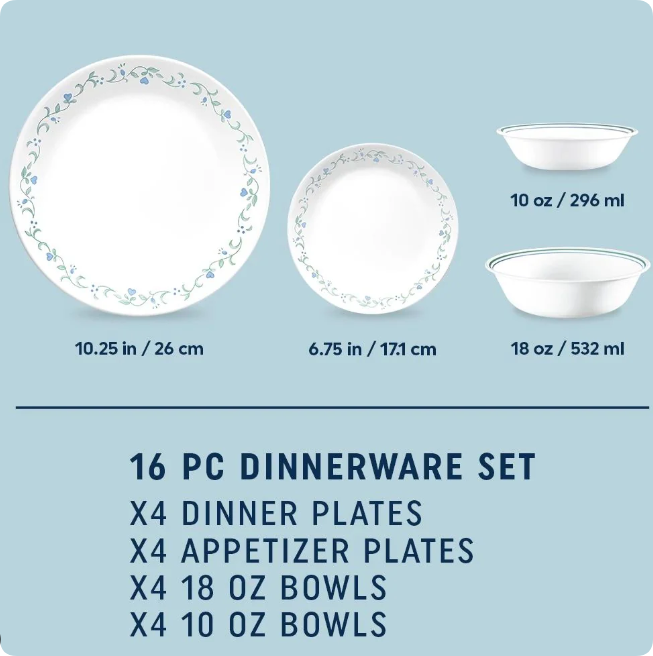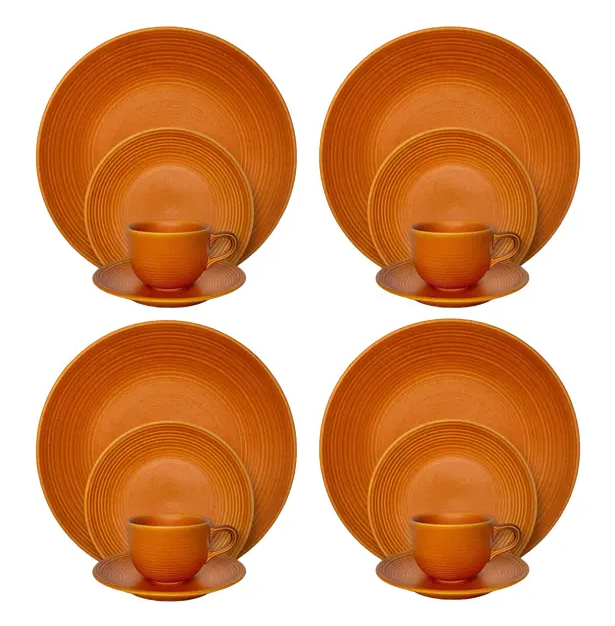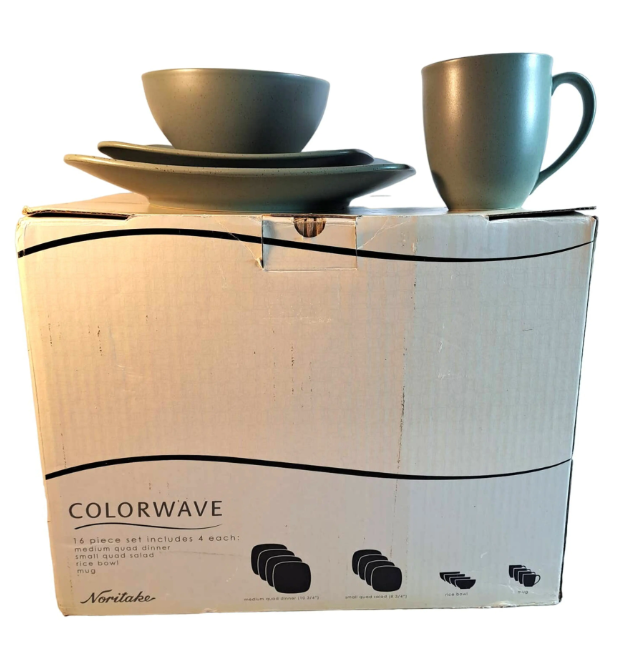When it comes to purchasing dinnerware for commercial or large-scale settings, a well-organized dinner set becomes crucial, especially for B2B buyers in the hospitality, retail, and food service industries. A 16-piece dinner set is a popular choice that serves small to medium-sized dining groups. This article delves into the specifics of 16-piece dinner sets, including what they include, suitable global markets, packaging methods, and procurement tips for B2B buyers.
What Does a 16-Piece Dinner Set Include?
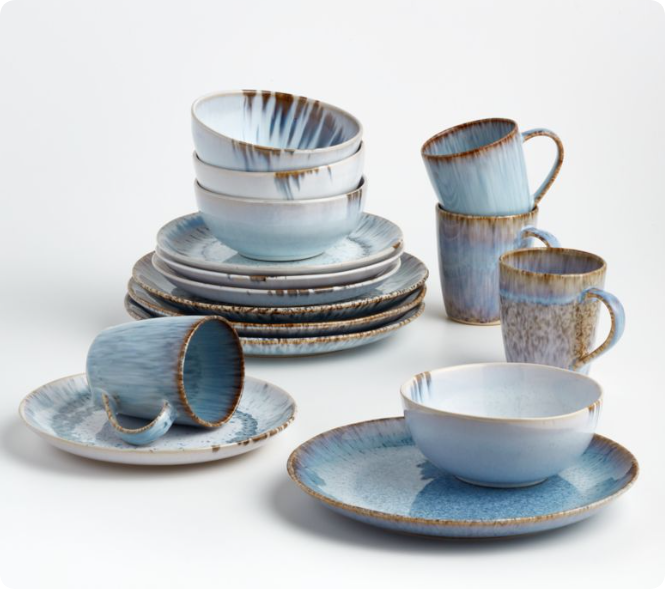
A typical 16-piece dinner set is designed for four people and includes essential components for a basic meal setup. Here is a breakdown of the common items found in such a set:
- Dinner Plates (4 pieces) – These are large plates used for main courses. They typically range between 10 to 12 inches in diameter.
- Salad Plates (4 pieces) – These smaller plates are perfect for appetizers, salads, or desserts. They are usually around 7 to 9 inches.
- Bowls (4 pieces) – The bowls are generally multi-purpose and used for soups, cereals, salads, or desserts. They range from 5 to 7 inches in diameter and have varying depths depending on their intended use.
- Mugs (4 pieces) – Mugs are a popular addition for coffee, tea, or other beverages. They often have a capacity between 10 and 14 ounces.
Variations in Composition
Depending on the manufacturer, there may be slight variations in what is included in a 16-piece dinner set. For example, some sets might replace mugs with cups and saucers or provide deeper bowls intended for pasta dishes. However, the overall structure generally revolves around providing service for four people.
Suitability of the 16-Piece Dinner Set for Global Markets
When selecting a dinner set for distribution or procurement, it’s important to consider the target market. Different countries and regions have distinct cultural preferences and dining habits, which influence the popularity of various dinnerware sets.
16 Piece Dinner Set Popular brands for reference
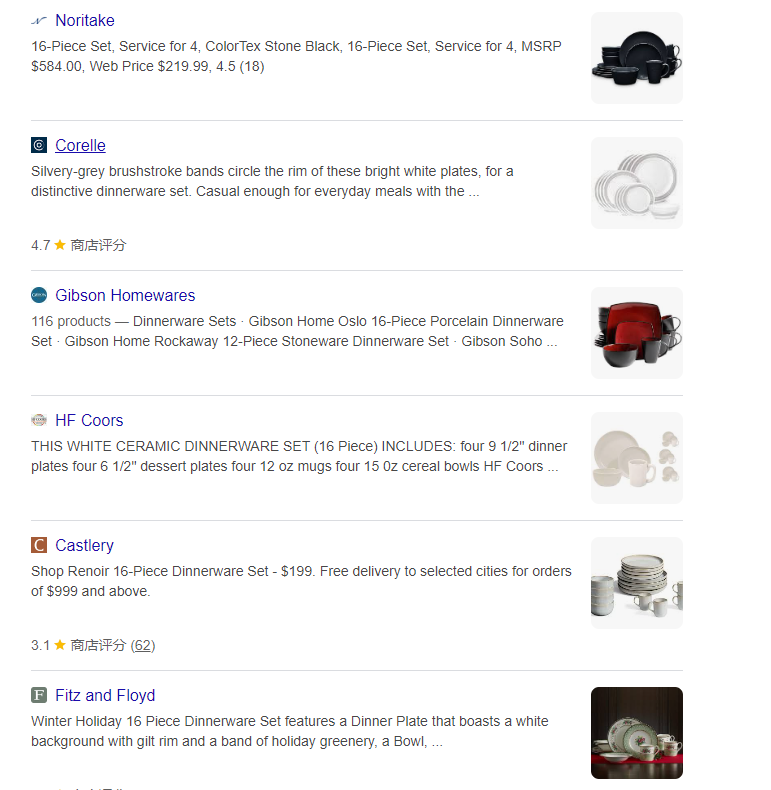
1. United States
The U.S. market is one of the largest for 16-piece dinner sets. Households and small restaurants frequently purchase these sets for their simplicity and completeness. American consumers appreciate a variety of styles, from modern minimalist designs to traditional patterns. The inclusion of mugs in a set is a popular choice, as coffee is a staple beverage in the U.S.
2. European Union
In Europe, dining customs vary by country. While a 16-piece dinner set is commonly accepted, some regions such as France and Italy may prefer more elaborate sets that include additional components like bread plates or saucers. However, the set is still highly regarded for small family gatherings or personal use.
3. Australia and New Zealand
The 16-piece dinner set fits well into Australian and New Zealand households due to similar dining patterns to the U.S. These countries have a strong coffee culture, making sets with mugs a perfect fit. Outdoor dining is also prevalent, so lightweight, durable materials such as porcelain and stoneware are popular.
4. Asia
While Western-style dining sets are becoming more common in Asian countries, such as Japan, South Korea, and China, traditional dining habits still influence demand. B2B buyers should consider offering more customizable options, as Asian households often prefer sets with smaller bowls and plates for serving rice and side dishes. The inclusion of chopsticks in dinner sets can also be an attractive feature for these markets.
5. Middle East
In the Middle East, dining sets may differ based on the region’s rich culinary traditions. However, for international hotels, restaurants, and expatriates, 16-piece sets are becoming increasingly popular. Large plates for main dishes and mugs for tea and coffee align with both local and Western dining habits.
Packaging Methods for 16-Piece Dinner Sets
For B2B buyers, understanding how dinnerware sets are packaged is crucial to ensuring that products are delivered in good condition and meet the aesthetic and practical requirements of their customers. A key aspect of packaging is ensuring that it is suitable for both transportation and retail display.
1. Bulk Packaging
This is the most common form of packaging for 16-piece dinner sets, especially when they are intended for large-scale distribution or wholesale buyers. In bulk packaging, the individual components are separated by cardboard dividers or foam inserts to prevent scratching and breakage. Plates, bowls, and mugs are securely stacked to minimize movement during transit.
- Cardboard Inserts and Foam Padding – These materials are used extensively to ensure that the items do not shift inside the box during transportation. Foam is particularly effective at protecting the edges of plates, which are the most vulnerable part.
- Shrink Wrapping – Each individual item may be shrink-wrapped to provide an extra layer of protection. Shrink wrap also helps keep the components clean during storage and handling.
2. Retail-Ready Packaging
Retail-ready packaging is designed with the end customer in mind and is particularly useful for stores and retailers who want to showcase the dinnerware set in a visually appealing way. The outer box is often colorfully printed with the design and features of the set, including photographs of the items inside.
- Window Boxes – A common retail-ready packaging method is to use boxes with transparent windows, allowing customers to see the plates, bowls, and mugs without opening the box. This is particularly attractive for gift purchases.
3. Environmentally Friendly Packaging
As sustainability becomes a major concern for consumers and businesses alike, many manufacturers are opting for eco-friendly packaging solutions. This can include recyclable cardboard, biodegradable packing materials, and reducing the overall use of plastic. For buyers targeting eco-conscious markets, environmentally friendly packaging can be a key selling point.
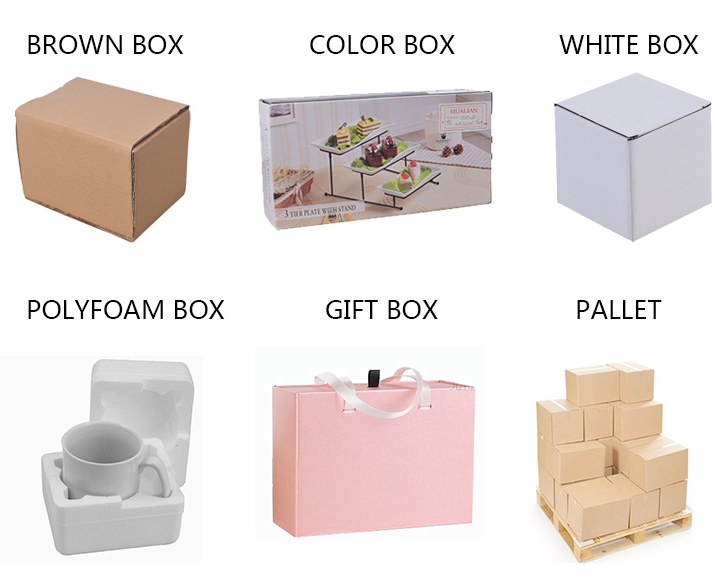
Procurement Tips for B2B Buyers of 16-Piece Dinner Sets
When procuring 16-piece dinner sets for commercial purposes, B2B buyers should consider several factors to ensure they make informed decisions that align with their business goals and customer expectations.
1. Material Selection
Dinnerware sets come in a variety of materials, each with its pros and cons. The most common materials include:
- Porcelain – Known for its durability and elegant finish, porcelain is a top choice for hotels, restaurants, and high-end retail. It is dishwasher-safe and resistant to chipping, making it ideal for frequent use.
- Stoneware – A popular choice for casual dining, stoneware has a rustic appeal and is generally more affordable than porcelain. It is also durable but may be heavier and prone to chipping if not handled carefully.
- Melamine – For buyers looking for lightweight, break-resistant options, melamine dinnerware is a great choice, particularly for outdoor settings or family-friendly establishments.
2. Design and Aesthetics
Design is a crucial consideration, especially for retailers targeting home consumers. Current design trends lean toward minimalism, with plain white or neutral-colored sets being the most versatile. However, buyers should also consider cultural preferences. In markets like Europe and Asia, intricate patterns and bold colors may be more popular.
3. Supplier Reputation
Before placing large orders, it’s important to verify the reputation and reliability of the supplier. Requesting samples, reading reviews, and checking references can save time and money in the long run. Additionally, working with established manufacturers like EKA Ceramic, known for their quality and attention to detail, reduces the risk of issues such as delayed shipments or product defects.
4. Custom Branding
For businesses that want to differentiate themselves in a competitive market, custom branding options for dinnerware sets are an attractive feature. B2B buyers should inquire whether the supplier offers services such as logo printing or exclusive designs to meet the specific needs of their clientele.
5. Minimum Order Quantities (MOQs)
When working with manufacturers, B2B buyers should always confirm the minimum order quantities (MOQs). While some suppliers may offer flexibility for smaller orders, larger MOQs often come with better pricing and more customization options.
Conclusion
A 16-piece dinner set is an excellent choice for B2B buyers catering to a wide range of markets, from hospitality to retail. These sets offer convenience, versatility, and aesthetic appeal, making them popular worldwide. By understanding the composition of a 16-piece set, identifying suitable global markets, considering packaging options, and following best practices in procurement, buyers can make informed decisions that meet both their business needs and the expectations of their customers.
For more information on high-quality 16-piece dinner sets, visit EKA Ceramic, a trusted manufacturer known for its expertise and attention to detail in creating exceptional dinnerware for the global market.

